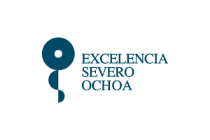Language development across the life span

Language development across the life span
The study of language learning and language processing offers an exceptional window into neural plasticity mechanisms across the life span. Our research aims to trace the trajectory of language development from infancy through adulthood and to identify the endogenous and environmental factors that foster language acquisition in the first months of life, promote the consolidation of language abilities in childhood and adolescence, and prevent their decline in old age.
Our infancy research will lead to a framework for understanding early language acquisition that systematically weights the maturational and environmental factors that predict an individual child’s proficiency in one or more languages. As a result of exposure to language input and rapid neural maturation during their first year of life, infants attune to and begin to acquire the specific linguistic system in their environment. These native language skills acquired in the first year of life (i.e., native speech perception and early vocabulary use) are determinants of children’s language attainment later in childhood. We conduct longitudinal and cross-sectional studies with monolingual and bilingual infants from birth until preschool age, combining state-of-the-art neuroimaging (fNIRS, EEG), behavioral (eye-tracking), and observational methods (parent-infant interactions), to obtain systematic measures of language exposure, determine the neural correlates of language processing, and track the interaction and development of these factors over the first years of life.
Our research with school-age children will lead to novel breakthroughs in understanding how the brain supports the representation of meaning during language processing by combining functional MRI and MEG with state-of-the-art computational models, including encoding, decoding, and pattern-classification models to understand the semantic properties encoded in brain activity (i.e. using word embedding models and representational similarity analyses). We will also assess the impact of healthy aging by comparing the brain representational spaces of semantic knowledge in aging people with high and low cognitive reserve.
In addition to assessing the correlates of language processing at the cortical level, we will integrate sub-cortical measures by focusing on thalamic structure and thalamo-cortical connectivity. The thalamus is a diencephalic structure which has massive white matter fiber projections to almost the entire cerebral cortex. We examine the developmental trajectories of human thalamic nuclei gray-matter volumes and white matter connections to the cerebral cortex across the life span and examine their relation to individual differences in some of the main language systems: speech production, speech comprehension and reading.
Finally, we take advantage of information technology to develop computerized language training tools. We test the efficacy of these interventions in terms of enhancing the functionality of the brain circuitry that underpins language processing and preventing or delaying language deficits associated with aging.









